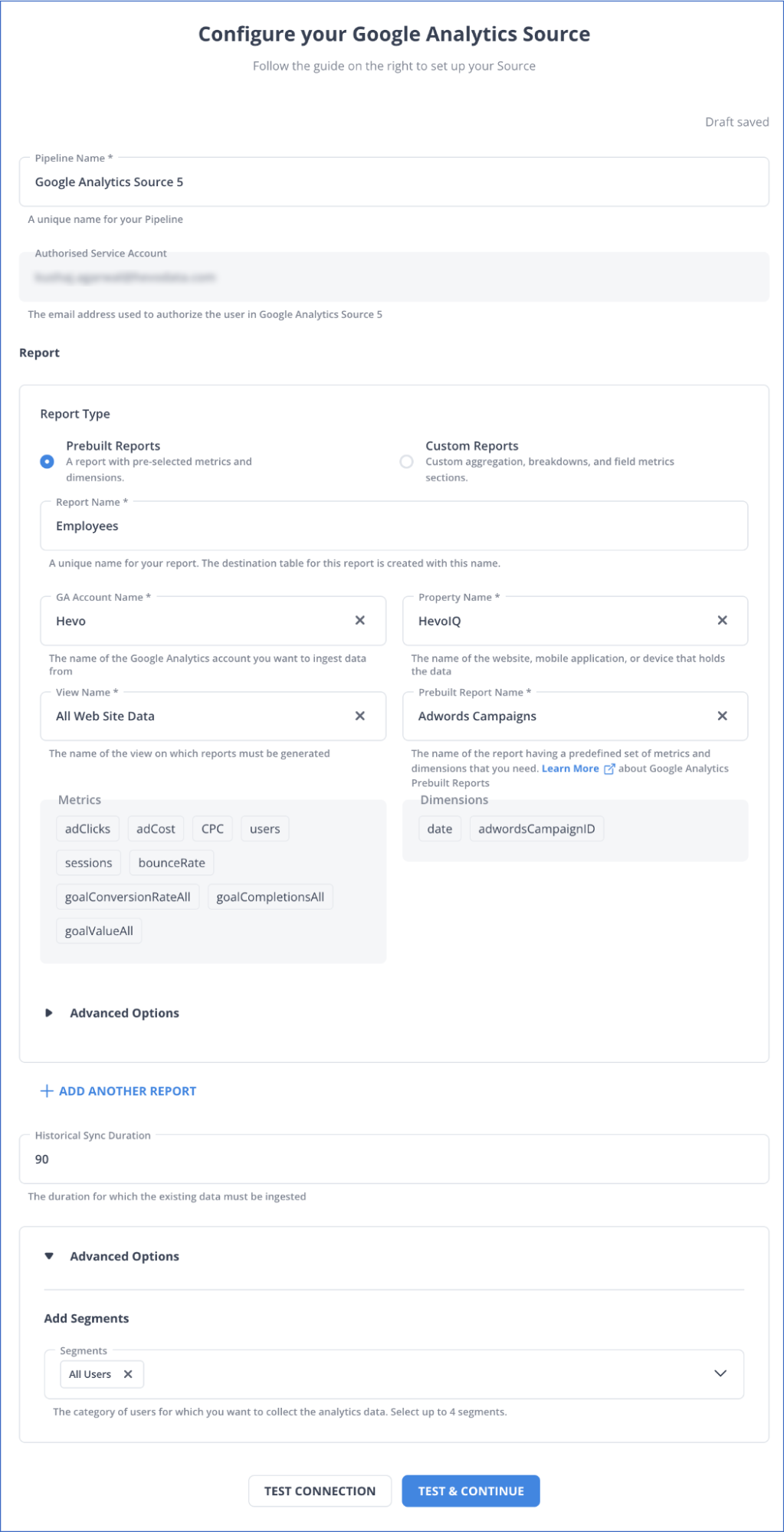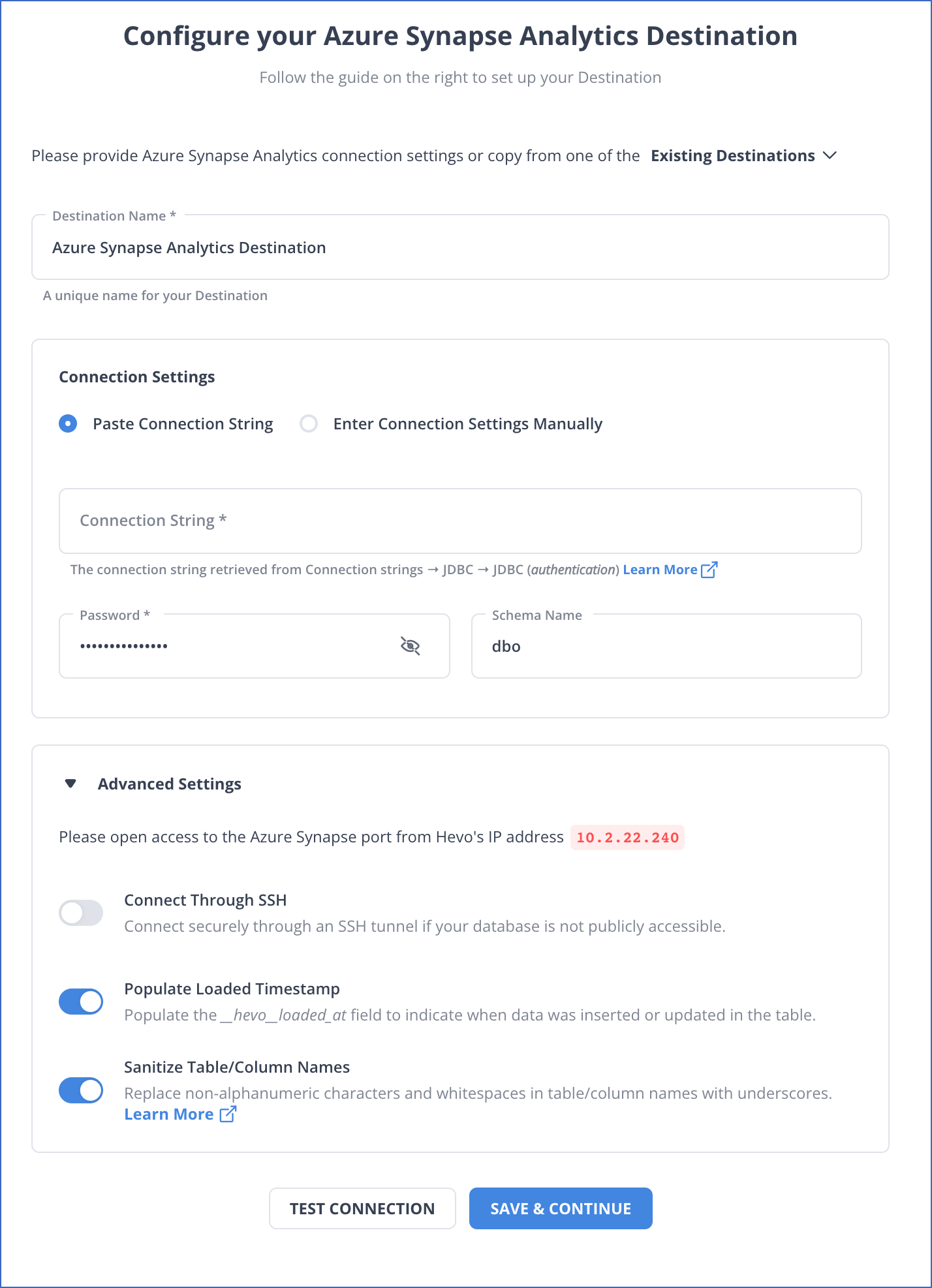“Torture the data, and it will confess to anything.”– Ronald Coase, the Nobel prize Laureate
Well, that’s a quote that would only be applicable in data analytics but very powerful. Do you agree? It’s pretty relevant when extracting data from Google Analytics to Azure because it’s very tricky. The APIs don’t permit us to extract event-level data.
Imagine a free direct Google Analytics to Azure connector. Ahh, wishful thinking! But it’s not that seamless in reality. In this blog, we’ll discuss two ways to replicate data from Google Analytics to Azure and when you should choose each method.
Table of Contents
What is Google Analytics?
Google Analytics is your go-to tool for understanding how visitors interact with your website. It’s like having a backstage pass to see what’s working, what’s not, and where you can improve. If you’ve ever wondered where your traffic is coming from or which pages are most popular, Google Analytics has covered you.
Features of Google Analytics
- Real-Time Data: Monitor your website activity live. See how many visitors are on your site, where they came from, and what they’re doing now.
- Audience Insights: Get to know your visitors. Discover their demographics, interests, and behavior patterns to tailor your content and marketing efforts.
- Conversion Tracking: Measure your goals and conversions. Whether it’s sales, sign-ups, or downloads, track how well your site meets its objectives.
What is Azure?
Azure is Microsoft’s cloud computing platform, which is like having a high-tech toolbox in the cloud. It offers various services, from virtual machines and databases to AI and machine learning. If you’ve ever needed a powerful, scalable solution for your business, Azure is there to help.
Features of Azure
- Data Storage and Databases: Store your data securely and access it from anywhere. Azure offers various storage options, including SQL databases, NoSQL, and blob storage.
- Security and Compliance: Azure’s robust security features keep your data safe. They offer encryption, identity management, and compliance with industry standards and regulations.
- Integration and Analytics: Integrate seamlessly with other Microsoft products, such as Office 365 and Dynamics 365.
Here, you must transfer your data into CSV format and then import it into Azure using custom Scripts. This process requires quite technical knowledge and is not at all hassle-free.
Method 2: Using a Fully Automated Data Pipeline Tool
Hevo, a Data Integration Platform, gets the same results in minutes with none of the hassles. It can help you bring Google Analytics data to Azure in real-time without writing a single line of code.
Get Started with Hevo for FreeHow to Replicate Data from Google Analytics to Azure
The first method is to convert the data from Google Analytics to CSV and then to Azure.
Method 1: Replicate Google Analytics to Azure Using CSV
Step 1: Convert to CSV
Step 1.1: To export a report in Google Analytics into CSV:
- Take a look at the report you want to export.
- Ensure that you select the date range and apply report parameters. Analytics exports the report exactly as it appears on your screen.
- Select Export (across from the report title).
- Choose CSV from the following export file types:
- CSV
- TSV
- TSV for Excel
- Excel (XLSX)
- Google Sheets
The next step is to share the report.
Point to note: Google Analytics has put a cap of 400 scheduled emailed reports per user per view.
Step 1.2: To send the report:
- Open the report and select Share (across from the report title).
- The From field contains a listing of the email address you used to log in.
- Enter a list of email addresses separated by commas in the To field.
- Choose the attachment format and frequency, then provide a subject.
- Click ADVANCED OPTIONS and choose an Active for a period if you chose a frequency other than Once in the previous step.
- For instance, if you choose Every day in the previous step and “1 month” for the Active term, Google Analytics will send the email daily.
- To enter the email body, use the text field and select Send.
The information provided in the email depends on the time zone you choose in the view settings. Google Analytics can’t guarantee a specific delivery time, but the tool sends emails sometime after midnight in the chosen time zone.
Step 2: Import Data from the CSV File into Azure
You can import data from a CSV file into an Azure SQL Database or an Azure SQL Managed Instance using the bcp command-line.
The required prerequisites for the step are,
- A database in Azure SQL Database
- The command-line utility installed by BCP
- The SQL cmd command-line tool
You can download the BCP and SQL cmd utilities from the Microsoft SQL cmd Documentation.
Since BCP does not support UTF-8, you must encode your data in ASCII or UTF-16.
Step 2.1: Make a destination table
In SQL Database, choose a table as the destination table. The data in each row of your data file must match the columns in the table. Open a command prompt, then enter the following command using sqlcmd.exe to create a table:
sqlcmd.exe -S <server name> -d <database name> -U <username> -P <password> -I -Q "
CREATE TABLE DimDate2
(
DateId INT NOT NULL,
CalendarQuarter TINYINT NOT NULL,
FiscalQuarter TINYINT NOT NULL
)
;
"Step 2.2: Create a source data file
You must copy the following data into a new text file in Notepad. Then, save to your local temporary directory., C:\Temp\DimDate2.txt. This data is in ASCII format.
20150301,1,3
20150501,2,4
20151001,4,2
20150201,1,3
20151201,4,2
20150801,3,1
20150601,2,4
20151101,4,2
20150401,2,4
20150701,3,1
20150901,3,1
20150101,1,3Open a command prompt and use the following command to export your own data from a SQL Server database. Substitute your own information for TableName, ServerName, DatabaseName, Username, and Password.
bcp <TableName> out C:\Temp\DimDate2_export.txt -S <ServerName> -d <DatabaseName> -U <Username> -P <Password> -q -c -t ","Step 2.3: Load the data
Open a command prompt and enter the following command to load the data, substituting the server name, database name, username, and password values with your own data.
bcp DimDate2 in C:\Temp\DimDate2.txt -S <ServerName> -d <DatabaseName> -U <Username> -P <password> -q -c -t ","You can use this command to verify Google Analytics loaded the data correctly.
sqlcmd.exe -S <server name> -d <database name> -U <username> -P <password> -I -Q "SELECT * FROM DimDate2 ORDER BY 1;"The results should look like this:
| DateId | CalendarQuarter | FiscalQuarter |
| 20150101 | 1 | 3 |
| 20150201 | 1 | 3 |
| 20150301 | 1 | 3 |
| 20150401 | 2 | 4 |
| 20150501 | 2 | 4 |
| 20150601 | 2 | 4 |
| 20150701 | 3 | 1 |
| 20150801 | 3 | 1 |
| 20150801 | 3 | 1 |
| 20151001 | 4 | 2 |
| 20151101 | 4 | 2 |
| 20151201 | 4 | 2 |
To migrate a SQL Server database, see SQL Server database migration. Remember that technology like Google Analytics is constantly changing. So, what worked yesterday might not work today.
CSV is a very useful way of transferring data from Google Analytics to Azure. Let’s see some use cases:
- When you need reports for one time: This is the best way when your business teams need Google Analytics reports on a one-time basis.
- When you don’t require data transformation: In situations when you don’t need to perform any complex analysis, data in your spreadsheets would suffice.
- When you have small files: It takes time to download and create SQL queries to submit several CSV files. This can be especially time-consuming if you need to create a 360-degree perspective of the business and combine spreadsheets with data from several departments around the company.
So instead of building and maintaining your own solution…
Method 2: Use A Fully Automated Data Pipeline Tool
Step 1: Connect Google Analytics as a Source

Step 2: Connecting Azure as Destination

Hence, the data will be replicated from source to destination.
Use cases of connecting Google Analytics to Azure
Integrating Google Analytics with Azure can supercharge your data capabilities. Here are some practical use cases for this powerful combination:
- Advanced-Data Analysis: Azure’s data processing and machine learning tools perform complex queries and advanced analyses that go beyond the basic insights offered by Google Analytics.
- Centralized Data Hub: Azure can serve as a central repository for all your data sources. By syncing your Google Analytics data with Azure, you can combine it with data from other sources like CRM systems, sales databases, and social media platforms.
- Enhanced Historical Analysis: Google Analytics has limitations on how long it retains data. By transferring your data to Azure, you can store it for as long as you need.
- Real-Time Data Processing: Azure supports real-time data processing, enabling you to analyze Google Analytics data as it comes in.
Learn More About:
- Facebook Ads to Azure Synapse
- Hubspot to Azure Synapse
- Salesforce Marketing Cloud to Azure
- Google Sheets to Azure Synapse
Key Takeaways
Data from Google Analytics can be replicated into Azure either through exporting CSV or by an automated data pipeline. The latter is preferred when data replication happens at specific times, where replicable patterns, accuracy of data, agility, and flexibility are prioritized as well as enhanced security.
You can enjoy a smooth ride with Hevo Data’s 150+ plug-and-play integrations (including 60+ free sources). Hevo Data is helping thousands of customers make data-driven decisions through its no-code data pipeline solution.
You can also look at our unbeatable pricing, which will help you choose the right plan for your business needs. Schedule a demo and explore how Hevo’s feature-rich suite can help your organization.
FAQ on Google Analytics to Azure
1. How to get data from Google Analytics to Azure?
1. ETL Tools: Use ETL tools like Hevo to extract data from Google Analytics and load it into Azure services.
2. Custom Scripts: Convert your Google Analytics data into csv file and load it into Azure storage using the bcp command line.
2. Is there a Microsoft equivalent to Google Analytics?
Microsoft offers Azure Application Insights as a part of Azure Monitor, which provides similar functionalities to Google Analytics for monitoring and analyzing application performance and usage.
3. How do I migrate from Google Cloud to Azure?
1. Assessment: Evaluate your current Google Cloud setup and identify the migration resources.
2. Data Transfer: Use Azure Migrate, CloudEndure, or custom scripts to transfer data and workloads.
3. Reconfiguration: Reconfigure applications and services to run on Azure.
4. Testing: Test the migrated resources to ensure everything works correctly.
4. How do I export bulk data from Google Analytics?
1. Google Analytics UI: Use the Google Analytics interface to export data reports in formats like CSV, Excel, or Google Sheets.
2. API: Use the Google Analytics Reporting API to extract large volumes of data programmatically.
3. Google BigQuery: Link Google Analytics to Google BigQuery and use BigQuery’s export features to manage bulk data.











